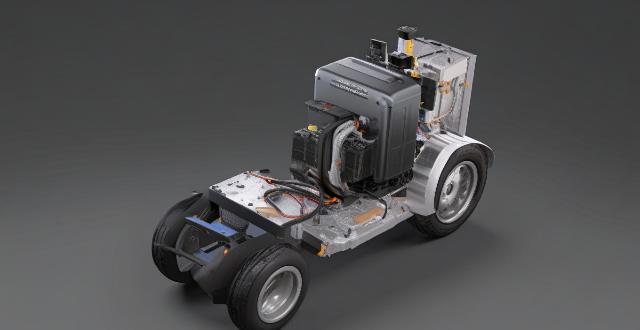Key components of a series hybrid electric vehicle (SHEV) include the battery pack, electric motor, internal combustion engine (ICE), generator, transmission, control unit, and regenerative braking system. The battery pack stores energy from the ICE or regenerative braking system and provides it to the electric motor when needed. The electric motor drives the wheels of the vehicle, while the ICE generates electricity to charge the battery pack rather than directly powering the wheels. The generator converts mechanical energy from the ICE into electrical energy to charge the battery pack. The transmission transfers power from the electric motor to the wheels using a single-speed reduction gearbox. The control unit manages the flow of energy between the various components and optimizes their operation. Finally, the regenerative braking system captures energy lost during braking and uses it to recharge the battery pack, increasing fuel efficiency and extending the range of the vehicle.

Key Components of a Series Hybrid Electric Vehicle
Series hybrid electric vehicles (SHEVs) are a type of hybrid vehicle that utilizes both an internal combustion engine (ICE) and an electric motor to power the wheels. The key components of a series hybrid electric vehicle include:
1. Battery Pack
The battery pack is the most important component of a series hybrid electric vehicle. It stores energy from the internal combustion engine or regenerative braking system and provides it to the electric motor when needed. The size of the battery pack determines the range and performance of the vehicle.
2. Electric Motor
The electric motor is responsible for driving the wheels of the vehicle. It receives power from the battery pack and converts it into mechanical energy to propel the vehicle forward. In a series hybrid electric vehicle, the electric motor is the only source of power for the wheels.
3. Internal Combustion Engine (ICE)
The internal combustion engine in a series hybrid electric vehicle is used to generate electricity to charge the battery pack rather than directly powering the wheels. The ICE is typically smaller and more efficient than in conventional vehicles since it does not need to produce as much power.
4. Generator
The generator is connected to the internal combustion engine and converts its mechanical energy into electrical energy to charge the battery pack. In some series hybrid electric vehicles, the generator may also be used to provide additional power to the electric motor during high-load situations.
5. Transmission
Since the electric motor is the only source of power for the wheels in a series hybrid electric vehicle, there is no need for a traditional transmission with multiple gears. Instead, a single-speed reduction gearbox is used to transfer power from the electric motor to the wheels.
6. Control Unit
The control unit, also known as the vehicle control module (VCM), manages the flow of energy between the battery pack, electric motor, internal combustion engine, and generator. It monitors various sensors and inputs to optimize the operation of the vehicle's systems and ensure smooth, efficient driving.
7. Regenerative Braking System
Regenerative braking is a technology that captures energy normally lost during braking and uses it to recharge the battery pack. In a series hybrid electric vehicle, this feature helps to increase fuel efficiency by reducing the load on the internal combustion engine and extending the range of the vehicle.
In summary, a series hybrid electric vehicle consists of several key components working together to provide a balance between fuel efficiency and performance. These components include the battery pack, electric motor, internal combustion engine, generator, transmission, control unit, and regenerative braking system.